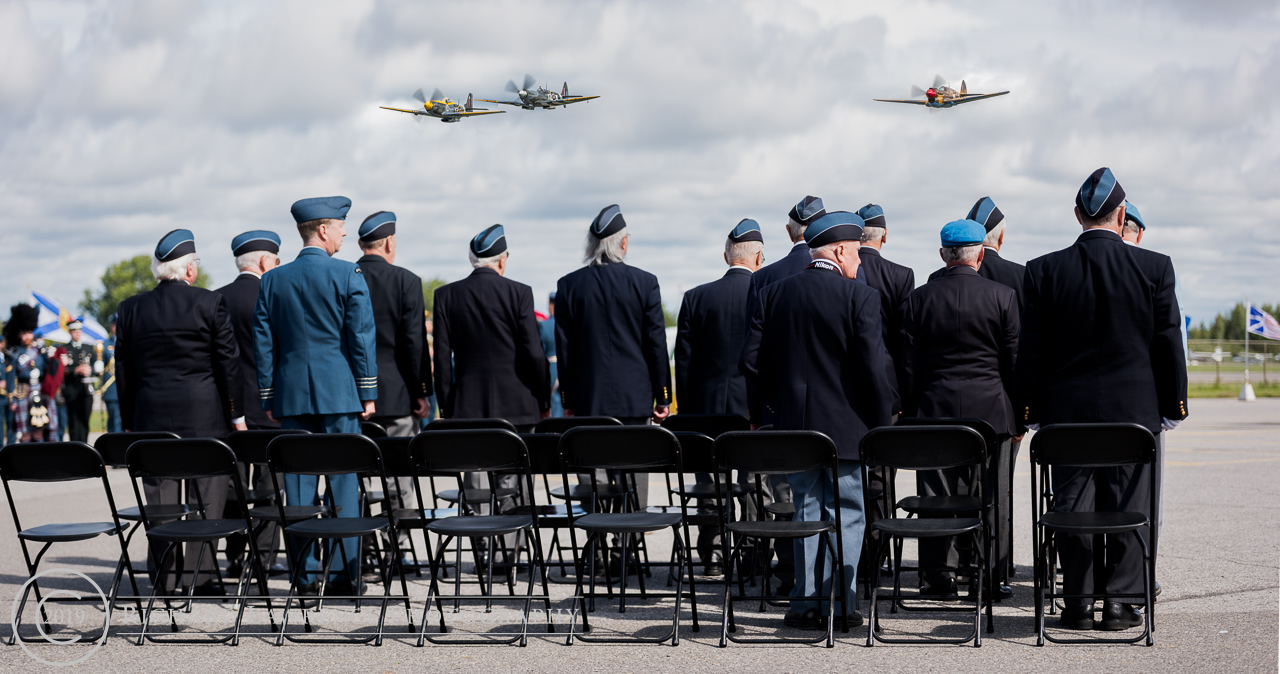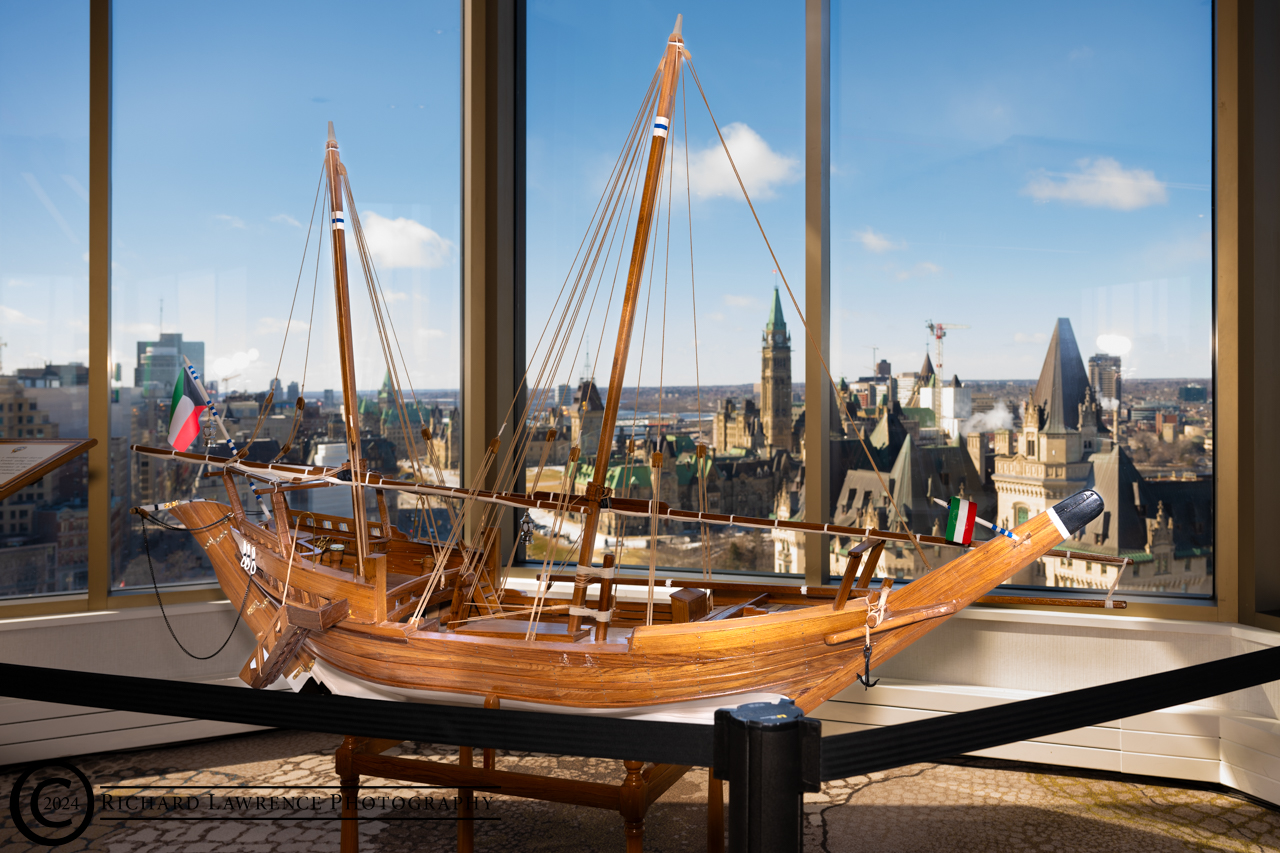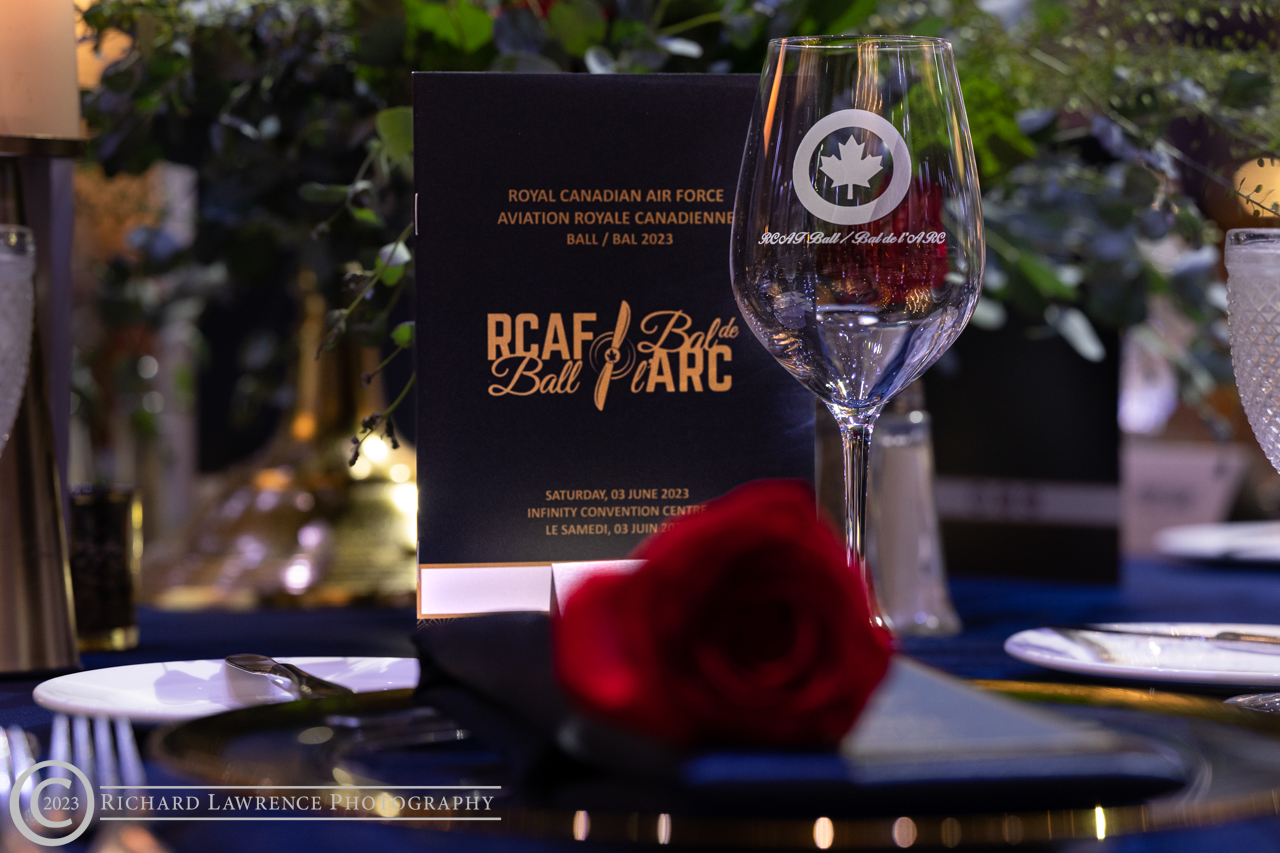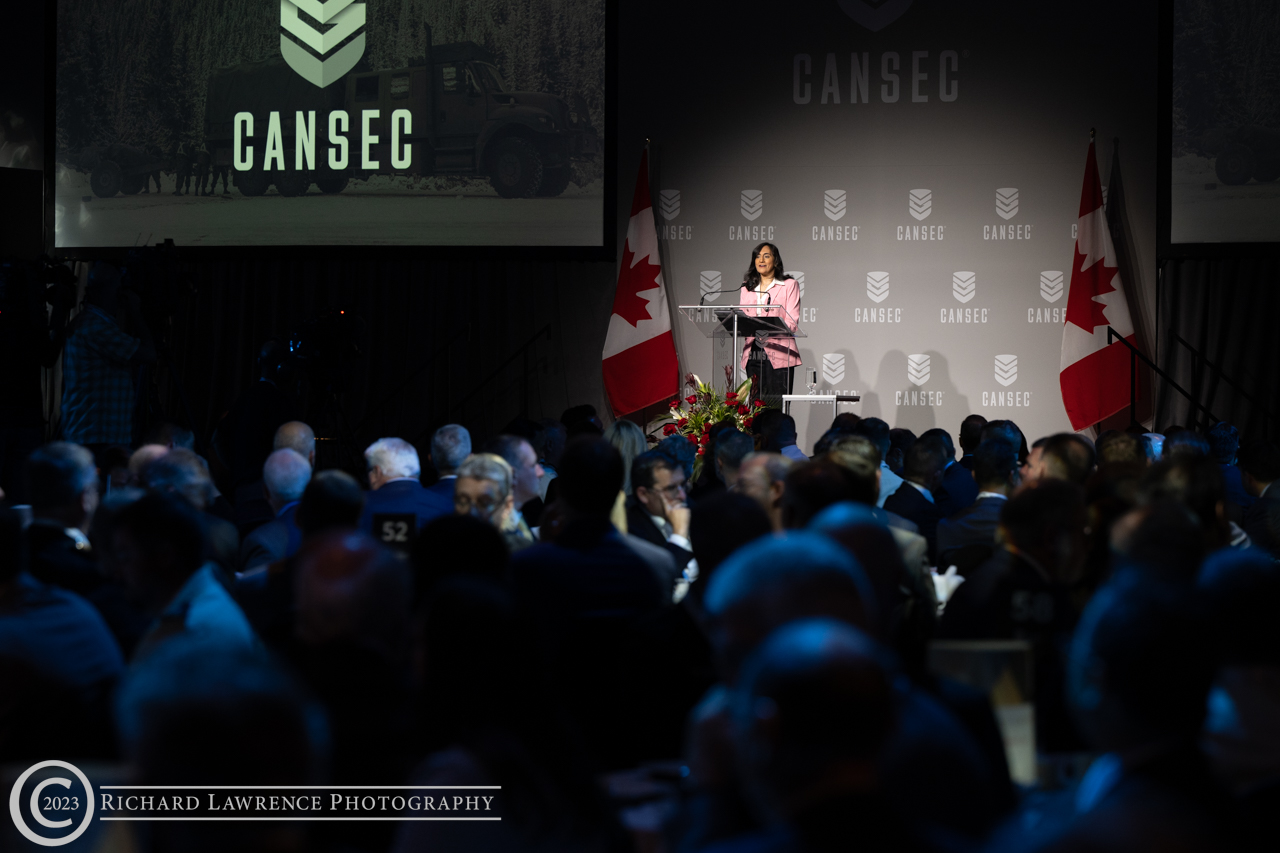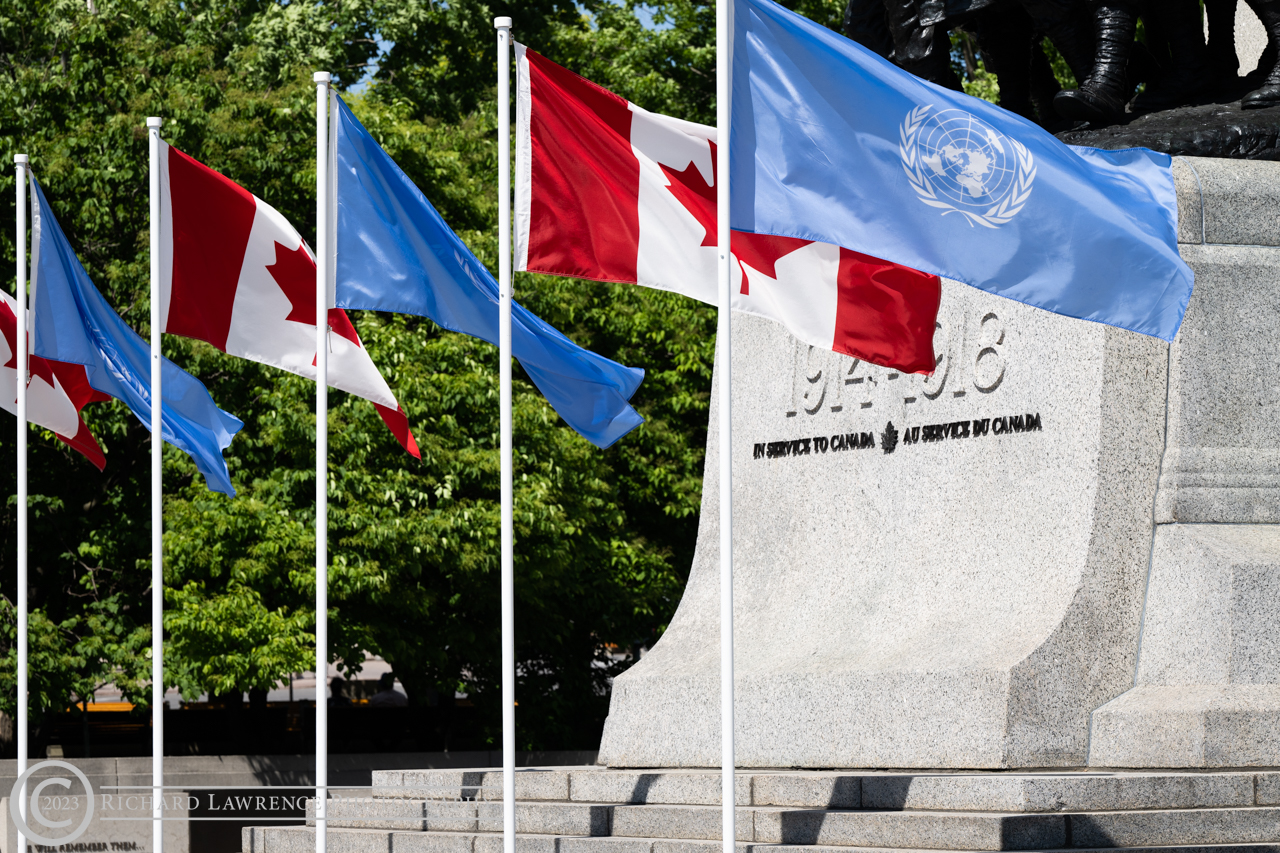The Battle of Britain was one of the fiercest battles of World War II and raged on for three months during the summer of 1940 with the Allies, in the end, defeating the Nazi Luftwaffe and stopping the invasion of the British Isles. On 15th Sept, 2019 behind the Canadian Air and Space Museum, the 79th anniversary of this battle was remembered and celebrated. The day started out sunny but by the time the ceremony started, had clouded over and cooled to a comfortable temperature – the sun only returning for the final minutes of the march off at the end.
This ceremony has a couple of events that separate it from the normal remembrance ceremonies starting with the singing of the national anthem by internationally acclaimed singer and Honourary Colonel of the RCAF, Loreena McKennitt. There were also flypasts of vintage aircraft from Vintage Wings of Canada who supplied a Spitfire Mk XI, a P-40 Kittyhawk, a P-51 Mustang, a Harvard, a Fleet Finch, and a Cornell. Music was supplied by the Central Band of the Canadian Forces and the RCAF Pipes and Drums.
Again, it was a lovely fall day, albeit overcast, and cool enough that the troops on parade weren’t adversely affected as they have been in past years by the heat. As well, because of past year’s heat, the cadets on parade stayed only long enough to be inspected by the reviewing officer, Commander of the RCAF, LGen. Meinzinger, after which they were marched off, only to rejoin the parade again for the march off. During the review, LGen. Meinzinger made sure to visit the veterans from 410 RCAF Association (William Barker, VC) Wing to shake hands and thank them for their service.
The wreath laying was interesting in that because of the winds sweeping across the site, the wreaths kept falling off their stands. When LGen. Meinzinger placed his, it also blew over and he spent time trying to find a way to get it to stay up, all the time trying to pick up other wreaths that had blown over. In the end, he took his wreath and the others laid so far and placed them flat on the ground and all other wreath layers followed suit from that point.
There were only two speakers for the event, the first being the Polish Defence Attaché, Capt.(N). Krzysztof Ksiazek who spoke of the friendships between Canada and the Polish forces forged in Britain during the war. He noted that Poland was the first nation to stand against the Nazis and when Poland fell, the remaining Polish forces moved to the United Kingdom, including 8,000 airmen who created two bomber squadrons and two fighter squadrons ( No. 302 and No. 303) under RCAF command. No. 303 (Polish) Sqn was the most successful unit in the Battle of Britain claiming 126 German fighters in 42 days despite joining half-way through the battle. By 1941 there were 13 Polish squadrons in the RCAF claiming 745 German aircraft and 342 gallantry awards but giving up over 1,900 aircrew killed and over 1,300 wounded.
He also spoke of Canadian Group Captain John Kent who served with No. 303 (Polish) Sqn and was also known by the Poles as “Johnny Kentowski”. John Kent had an illustrious career highlighted by an action on 1st November, 1940 when he found himself alone against 40 Messerschmidt Bf-109s. During the action he downed two Germans aircraft and got hits on another while managing to extricate himself and get home. On 24th December, 1940, he was awarded the Silver Cross of the Polish Virtuti Militari for achievements while with No. 303 (Polish) Sqn. By June ’41 he had moved up to Wing Leader of the Polish Wing in charge of four squadrons in Norholt. Despite flying with the Polish squadrons, Kent always maintained his Canadian identity with his personal marking on his Spitfire – a maple leaf with the Polish eagle on top.
Capt. (N) Ksiazek also mentioned the Canadian participation in the Polish Uprising in 1944 when 26 Canadian aircrew lost their lives flying in supplies to the resistance that tried to take Warsaw prior to the Soviet forces arriving. He noted that every year, there is a ceremony to commemorate the uprising in Confederation Park, Ottawa, where there is a monument to those men. After thanking everyone for listening, he then turned over the podium to the Commander of the RCAF, LGen. Meinzinger.
LGen. Meinzinger first thanked those in attendance for taking the time to remember and the veterans in who came out. In speaking of the Battle, he noted that 100 Canadian pilots flew in the Battle and that 23 were killed. They flew with RCAF squadrons in Bomber, Coastal, and Fighter Commands (including No. 202 (Cdn) squadron), and were also represented by No. 1 RCAF Fighter squadron. He also noted that the last living Canadian Battle of Britain pilot (Squadron Leader John Steward Hart) had died in June at the age of 102 years having flown Spitfires in No. 602 Sqn.
In closing, he recognized the importance of these events to, “… bear witness, that we do remember, we do learn, and we will continue to carry the torch for future generations.”
Following the March Off, everyone adjourned to the Canada Aviation and Space Museum for refreshments.
to see all the images, CLICK HERE
-
 BoB_2019See photo gallery»
BoB_2019See photo gallery»
=========================================================
